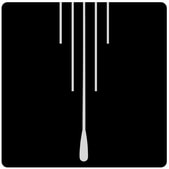The Flute Embouchure
Main Points
- Center the lip plate on your lips
- Place the lip plate on your chin, below your bottom lip
- Cover about a quarter of the tone hole with your bottom lip
- Keep your mouth in relaxed, focused circle (with a slight frown), like you're sucking a straw
The term embouchure refers to the muscles around your mouth and the shape your mouth and jaw must take to produce a good sound on your instrument. Forming a good embouchure takes time and practice, and you’ll find your mouth getting tired while playing until you’ve strengthened your embouchure muscles more. Below are the first steps to forming a good embouchure.
- Position the lip plate so that it rests on the spot where your chin meets your lips. You should be able to feel the embouchure hole against the edge of your bottom lip. Hold it against your face with just enough pressure so that if someone tried to pull the flute away from you it would not budge.
- If you have fuller lips, you may need to place the flute slightly higher.
- If you have thin lips, the flute may need to be slightly lower.
- Keep the embouchure hole centered with your lips.
- If your upper lip has a prominent “teardrop” shape, position the embouchure hole slightly left-of-center to your lips, or pull your up lip flat. You will want to focus on shaping your embouchure around this section of your lips.
- Keep your mouth in a fairly relaxed, neutral position, with a slight frown.
- Form the center of your mouth into a small circle, similar to the size and shape it would take if you were sucking on a straw or saying “ooh”. Avoid puckering.
- Keep your upper lip relaxed enough so that you can shift it forward or back as necessary – you will use this lip to aim your airstream at the far edge of the tone hole.
- Keep your jaw steady but relaxed so you can easily shift it up and down as necessary. This is done to increase or decrease the opening in your mouth.
This is simply a starting point. Over time you will find an embouchure that works right for you.
If you’re struggling to produce a good tone, try making subtle adjustments to the following things:
- Adjust the amount of firmness around your mouth and jaw. Flute embouchures are quite relaxed, but you won’t get any sound if you have no support at all!
- Roll the flute away or toward you. As a rule of thumb, if your tone sounds thin and weak, try rolling out. If it sounds too airy or wide, roll in.
- Adjusting only your upper lip, try aiming the airstream slightly higher or lower relative to the tone hole.
- Use your lower lip and jaw to adjust how open your mouth is.
